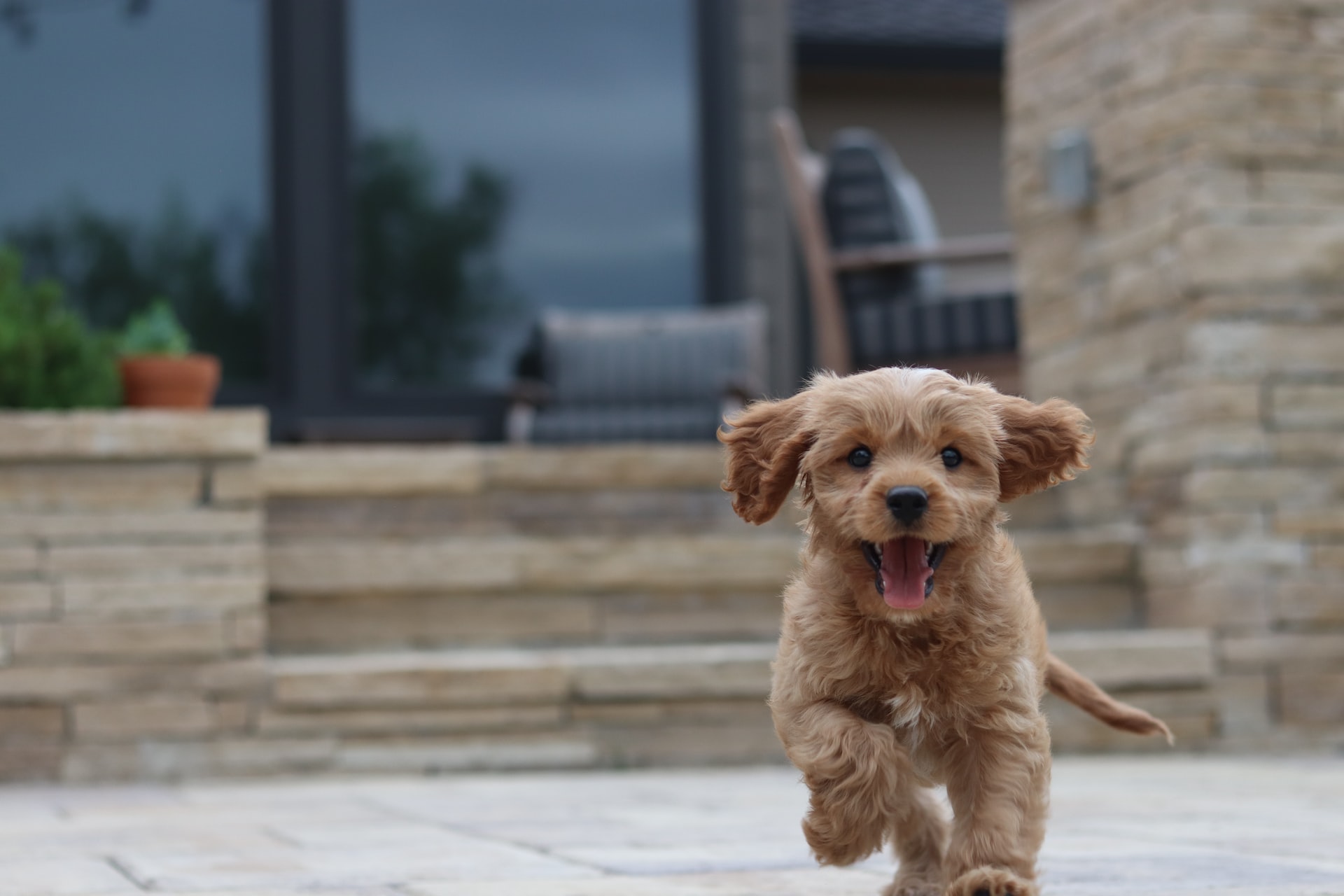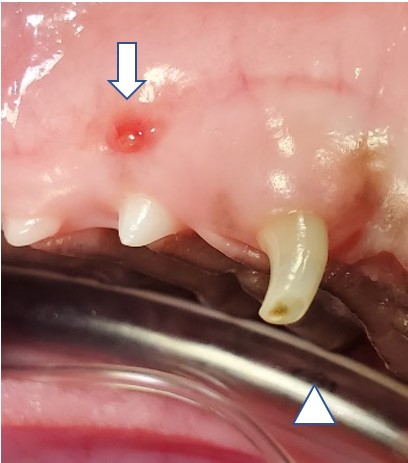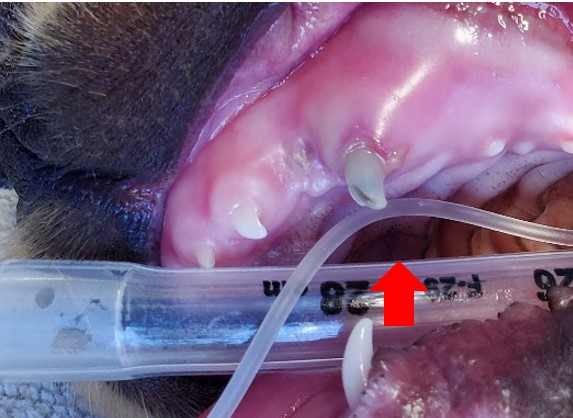
28 Feb Treating Retained or Fractured Deciduous Teeth in Dogs
We are all familiar with teething, the process that occurs during childhood and adolescence when our primary teeth (also called baby teeth, deciduous teeth) are replaced by our secondary teeth (also called adult teeth, permanent teeth).
Perhaps nothing puts a child in a better mood than knowing that they have lost a tooth and that the tooth fairy may be putting $1 under their pillow! Well, cats and dogs also have two ‘sets’ of teeth–most mammals do–and because the teething process is quite complex, mistakes can occur and teething may not go according to design.
Additionally, puppies play rough and fracture their deciduous canine teeth quite often.
What Are Retained Deciduous Teeth
The most common problem during the replacement of deciduous teeth with permanent teeth is retention. A retained deciduous tooth (baby tooth) occurs when certain signals (cells must more or less talk to each other in a process called cell signaling) are not sent or are not interpreted.
These cell signals cause the tooth to loosen, cause the gum tissue to stop holding onto the deciduous tooth, and cause an opening in the gum for the permanent tooth to “erupt” through. This is terribly oversimplified, but will serve this discussion well enough.
It is quite common for canine teeth to go through these errors. In other words, the permanent canine tooth wants to erupt into its correct position but can’t quite get there because the deciduous tooth does NOT fall out (exfoliate).
Now, we have a problem because just as important as the tooth ending up in its correct position, the spaces where teeth should NOT be will remain crowded and the partner tooth on the opposing arch won’t have room either.
This is the most common type of puppy malocclusion that I see in practice. Two teeth are trying to occupy the same space at the same time, and that will not work!
How Do We Treat Retained Deciduous Teeth?
Veterinary dentists fix these issues by extracting (pulling) the deciduous tooth, moving the adult tooth with orthodontics, or both.
The age at which all these things must be done is critical and is generally accepted as being anywhere from 3-12 months old for the best outcome. Your veterinarian will be the first to notice these problems and sometimes be able to perform the appropriate procedures on their own. Other times, they may need you to consult with a board-certified veterinary dentist to be certain the best treatment plans are discussed and adhered to.
You can do your part by making sure that you and your regular veterinarian discuss and look at your puppy or kitten’s teeth together at their wellness examinations and ALSO schedule a dentistry-specific examination at around 8-9 months of age.
This is important because vaccinations and all other wellness visits are typically completed by 6 months of age and you may otherwise believe you don’t need to go back to your veterinarian until your pet is approximately 18 months old! You’ll miss that chance to do what is best for your pet and their dentistry needs.
Not all pets have any problem going through teething, and the odds are quite good that your pet will not have any problem either. But if they do have an issue, it is best to get it fixed when they are young and let them live a pain-free and functional life right away.
Treating a Fractured Deciduous Tooth
The second most common problem I see with deciduous teeth is a fracture (of the tip of the tooth). Fractured deciduous teeth must be extracted as soon as they are noticed. It is very uncommon for a fractured deciduous tooth to remain vital (alive) and non-painful.
Pictured below is a fractured deciduous tooth in the late stage of infection. The white arrow points to the tract that pus takes to drain from the side of the face. The white arrowhead shows the fractured tooth tip.
The second photo is a picture of cellulitis spreading through the entire left upper lip of a 12-week-old puppy, due entirely to the fractured and dark grey (dead) deciduous tooth (red arrow)!


I see veterinarians and owners alike make the mistake of leaving these fractured teeth alone. Their thought is that it is a baby tooth and it will fall out before it causes problems. As you can see from the photos this is not the case!
Finally, deciduous teeth are quite long and narrow making their extraction difficult to complete. The entire tooth must be removed. Board-certified veterinary dentists are best trained to handle this meticulous extraction.
Veterinary Dentist in Nebraska
If you’re looking for a veterinary dentist in Nebraska, the certified veterinary dentists at Nebraska Dentistry & Oral Surgery for Animals would love to care for your pet!
Photo by Mia Anderson on Unsplash

